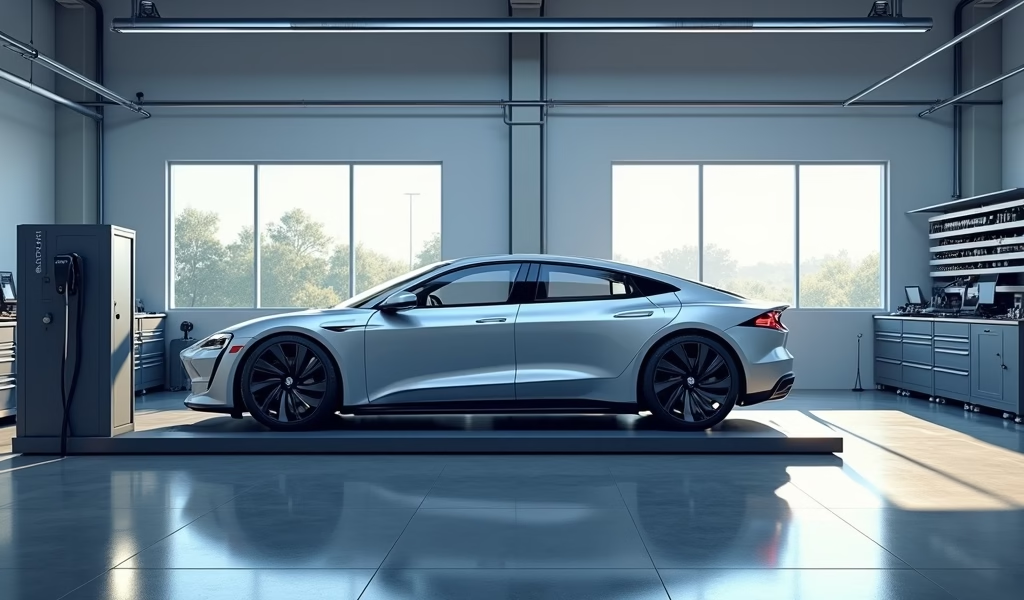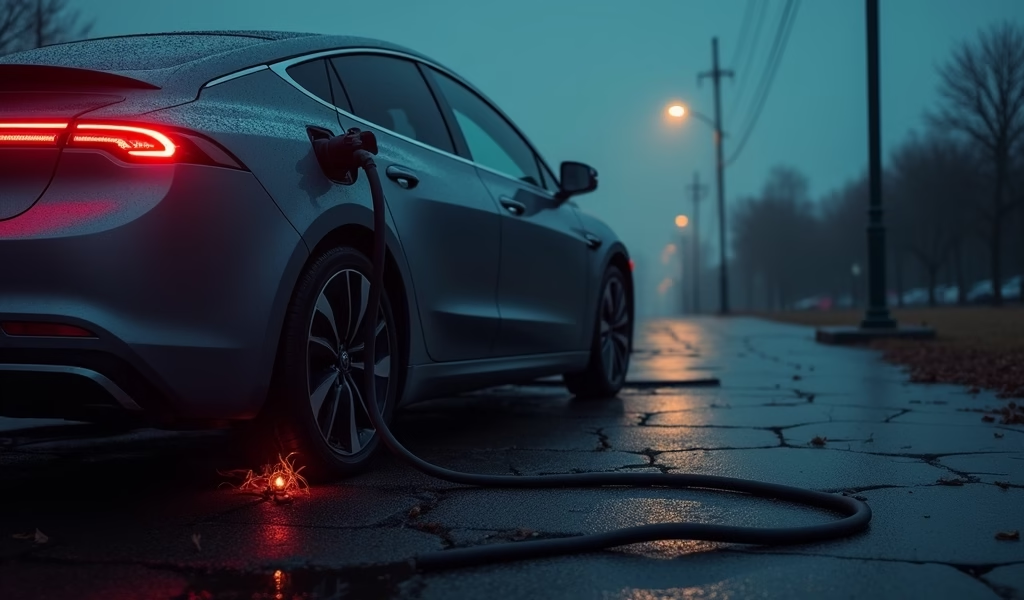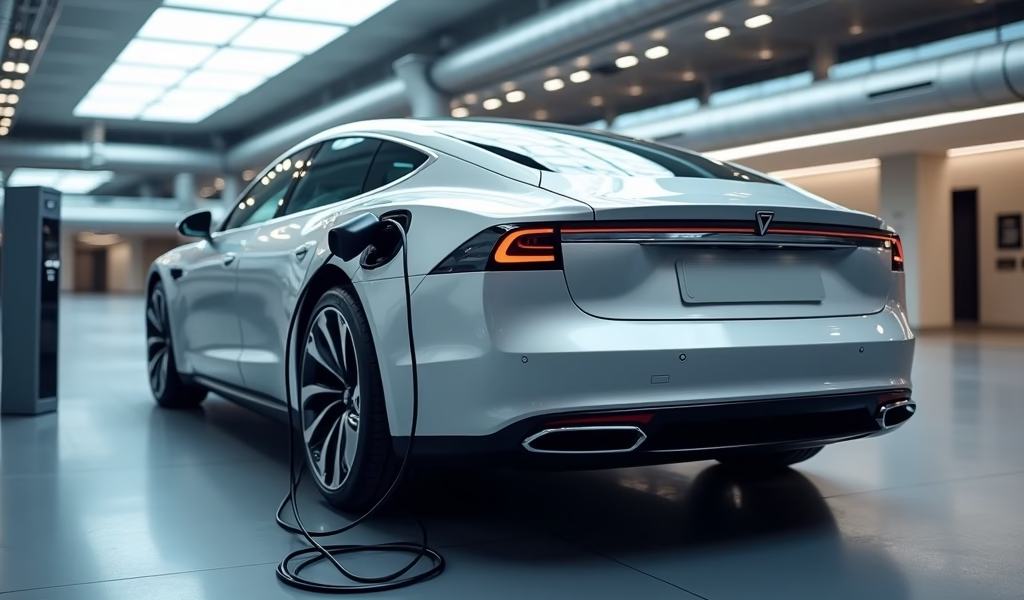Overview
This article provides a mechanic’s perspective on electric vehicles, examining their advantages (lower operating costs, environmental benefits, performance, reduced noise) and challenges (range limitations, charging infrastructure, higher purchase price, battery concerns), while offering maintenance tips and guidance for potential buyers. The piece concludes that while EVs represent a revolutionary shift in transportation with compelling benefits, their suitability depends on individual circumstances including driving patterns, charging access, and environmental priorities.
Table of Contents
- The Electric Revolution: Understanding the EV Landscape
- Plugged In: The Advantages of Going Electric
- The Flip Side: Challenges of Electric Vehicle Ownership
- 7 Essential Care Tips for Electric Vehicle Owners
- Long-Term Maintenance: Keeping Your EV in Prime Condition
- Future Trends: Where Electric Vehicles Are Heading
- Making the Decision: Is an Electric Car Right for You?
- Conclusion: Navigating the Electric Highway
- Frequently Asked Questions
The Electric Revolution: Understanding the EV Landscape
The automotive world is experiencing a seismic shift as electric cars move from niche curiosities to mainstream options. As a mechanic who’s had his hands in engine compartments for over two decades, I’ve witnessed this transformation firsthand – and it’s nothing short of revolutionary.
Electric vehicles (EVs) operate on fundamentally different principles than their internal combustion engine (ICE) counterparts. Instead of hundreds of moving parts working in precise harmony, EVs use electric motors powered by battery packs to deliver instant torque and whisper-quiet operation. This simplicity brings both advantages and challenges worth understanding before making the switch.
The electric cars pros and cons debate isn’t just academic – it’s practical. Whether you’re considering your first EV purchase or maintaining one you already own, knowing what makes these vehicles tick (or hum, rather) helps you make informed decisions about care and operation.
Let’s pop the hood on these remarkable machines and examine what makes them unique, starting with the advantages that are driving their increasing popularity.
Plugged In: The Advantages of Going Electric
After servicing thousands of vehicles throughout my career, I can tell you that EVs offer distinct benefits that traditional cars simply can’t match:
Lower Operating Costs
Electricity is substantially cheaper than gasoline or diesel, potentially saving the average driver $800-1,500 annually on fuel alone. When you combine this with reduced maintenance needs – no oil changes, fewer brake replacements due to regenerative braking, and fewer mechanical systems to fail – the economic advantages become compelling over time.
EVs typically cost 3-5 cents per mile to operate compared to 10-15 cents for gas vehicles, according to Department of Energy data. That difference adds up quickly when you’re logging thousands of miles each year.
Environmental Benefits
Even accounting for electricity generation, EVs produce fewer emissions over their lifetime than conventional vehicles. The gap widens as power grids incorporate more renewable energy sources. Plus, there’s the immediate benefit of zero tailpipe emissions, reducing local air pollution where the vehicle operates.
Performance Advantages
Many drivers are surprised by the immediate torque and smooth acceleration electric motors provide. EVs deliver 100% of their torque instantly, creating that characteristic “electric surge” when you press the accelerator. This makes even modest electric models feel surprisingly responsive in everyday driving.
Reduced Noise Pollution
The near-silent operation of EVs creates a more peaceful driving experience and contributes to quieter neighborhoods. You’ll notice this most during in-town driving, where the absence of engine noise can be genuinely refreshing.
Electric vehicles represent a fundamentally different approach to personal transportation – one that brings numerous advantages to the driver and the broader community. However, like any technology, they aren’t without their challenges.

The Flip Side: Challenges of Electric Vehicle Ownership
As someone who diagnoses vehicle problems daily, I’d be doing you a disservice if I didn’t address the current limitations of electric vehicles:
Range Considerations
“Range anxiety” remains a real concern for many potential EV owners. While modern electric vehicles offer increasingly impressive ranges – many exceeding 250 miles per charge – they still can’t match the convenience of a five-minute gas station fill-up for long-distance travel. Planning becomes more critical, especially for road trips through areas with sparse charging infrastructure.
Charging Infrastructure Limitations
Despite rapid expansion, charging networks aren’t universally available. Urban dwellers without home charging capabilities face particular challenges. Additionally, not all chargers are created equal – level 1 chargers (standard 120V outlets) might add only 3-5 miles of range per hour, while DC fast chargers can add 100+ miles in 30 minutes.
Higher Initial Purchase Price
Though prices are trending downward, EVs typically cost more upfront than comparable gasoline vehicles. This premium can range from $5,000 to $15,000 depending on the model, though tax incentives and rebates may offset some of this difference. The total cost of ownership often favors EVs over time, but the higher entry price remains a barrier for many buyers.
Battery Degradation Concerns
All batteries experience capacity loss over time. While modern EV batteries are engineered to maintain performance far longer than smartphone batteries, they will gradually hold less charge as they age. Most manufacturers warranty their batteries for 8-10 years or 100,000+ miles, but replacement costs remain significant.
Understanding these limitations helps set realistic expectations. Now, let’s turn our attention to something equally important – how to properly care for an electric vehicle to maximize its benefits and minimize potential issues.
7 Essential Care Tips for Electric Vehicle Owners
After working on both conventional and electric vehicles, I’ve developed these practical care tips that help EV owners get the most from their investments:
1. Optimize Your Charging Habits
Contrary to what you might think, keeping your battery at 100% charge constantly isn’t ideal. For daily use, charging to 80-90% maximizes battery longevity. Reserve full charges for long trips when you need maximum range. Similarly, try not to let the battery drop below 20% regularly if possible.
Many EVs allow you to set charging limits through their control systems or companion apps. Use these features to implement healthier charging habits without extra effort.
2. Mind the Temperature Extremes
Batteries perform best in moderate temperatures. In extreme heat or cold, use pre-conditioning while the vehicle is still plugged in. This warms or cools the battery using grid power rather than stored energy, preserving your range. When parking for extended periods in extreme temperatures, seek out covered or climate-controlled options when available.
3. Practice Efficient Driving Techniques
Aggressive acceleration and high-speed driving dramatically reduce range. Embrace “one-pedal driving” where available, using regenerative braking to recapture energy. This not only extends range but also reduces wear on your friction brakes, potentially doubling or tripling their service life.
4. Keep Your Tires Properly Inflated
Correct tire pressure is even more critical for EVs than conventional vehicles. Under-inflated tires can reduce range by 10% or more due to increased rolling resistance. Check pressure monthly, including the spare if your vehicle has one, and adjust according to manufacturer recommendations rather than the maximum pressure listed on the tire sidewall.
5. Schedule Regular Brake System Inspections
Because regenerative braking handles most slowing in EVs, the physical brakes see less use. This sounds positive but can actually lead to corrosion or sticking in humid climates. An annual brake inspection ensures everything remains functional despite less frequent use.
6. Maintain the Cooling System
Most EVs use sophisticated liquid cooling systems to maintain optimal battery temperature. Have the coolant checked according to manufacturer recommendations, typically every 5 years or 50,000 miles. A properly functioning cooling system is essential for battery health and longevity.
7. Keep Software Updated
Unlike traditional vehicles, EVs often improve through software updates. These can enhance range, charging speed, or add entirely new features. Some updates happen automatically over cellular connections, while others might require dealer visits. Check for available updates monthly, especially before long trips.
Following these care tips will help ensure your electric vehicle delivers consistent performance and retains maximum value over time. Now, let’s look at the longer-term maintenance picture.
Long-Term Maintenance: Keeping Your EV in Prime Condition
One of the most significant advantages of electric vehicles is their reduced maintenance requirements. With fewer moving parts and no combustion process, many traditional service items simply disappear. However, this doesn’t mean EVs are maintenance-free.
While you’ll say goodbye to oil changes, spark plugs, timing belts, and exhaust system repairs, several maintenance items remain important:
- Cabin air filters (typically annual replacement)
- Brake fluid service (usually every 2-3 years)
- Coolant system flushes (typically every 5 years)
- 12-volt auxiliary battery replacement (every 3-5 years)
- Tire rotations, balancing and eventual replacement
Additionally, consider having a specialized EV inspection annually. This should include checking the high-voltage battery connections, examining cooling systems for leaks, and verifying the integrity of the charging system components.
For those who enjoy DIY maintenance, be aware that high-voltage systems in EVs require specialized training and equipment. Never attempt to service orange-colored high-voltage components yourself – these systems operate at potentially lethal voltage levels and should only be serviced by qualified technicians.
Establishing a relationship with a service center experienced with your specific electric vehicle model is invaluable. As EVs become more common, more independent shops are gaining the necessary expertise, potentially offering more competitive service pricing than dealerships.

Future Trends: Where Electric Vehicles Are Heading
The electric vehicle landscape is evolving rapidly, with several promising developments on the horizon that will address current limitations:
Battery Technology Improvements
Solid-state batteries represent the next frontier, potentially offering greater energy density, faster charging, improved safety, and longer lifespans. Major manufacturers have announced plans to implement this technology in production vehicles within the next 3-7 years.
Meanwhile, incremental improvements to existing lithium-ion technology continue to extend range and reduce charging times year over year. The 300+ mile range that seemed remarkable just a few years ago is becoming standard, with some premium models already exceeding 400 miles per charge.
Expanding Charging Networks
Both public and private investment in charging infrastructure is accelerating globally. In the United States alone, the National Electric Vehicle Infrastructure (NEVI) program is directing $5 billion toward establishing charging stations along highway corridors, while private companies like Tesla, Electrify America, and ChargePoint continue expanding their networks.
The standardization of charging connectors is also progressing, with most manufacturers adopting the Combined Charging System (CCS) or Tesla’s North American Charging Standard (NACS), simplifying the charging experience for consumers.
Vehicle-to-Grid Integration
Emerging bidirectional charging capabilities will allow EVs to not only consume electricity but also return it to the grid during peak demand periods. This creates potential income opportunities for owners and helps stabilize the electrical grid, particularly as renewable energy sources like wind and solar, with their variable output, become more prevalent.
Some vehicles already offer limited “vehicle-to-load” functionality, allowing them to power external devices or even homes during power outages – a feature that adds considerable practical value beyond transportation.
Making the Decision: Is an Electric Car Right for You?
When customers ask me whether they should go electric, I always encourage them to consider their specific circumstances rather than making decisions based on general trends or hype. Here are the key factors to evaluate:
Assess Your Driving Patterns
If most of your driving consists of predictable daily routes well within 200 miles round trip, with overnight parking at a location where charging is possible, an EV could seamlessly integrate into your lifestyle. Conversely, if you frequently take long road trips through remote areas or lack reliable home charging options, the transition might prove more challenging.
Calculate Your Total Cost of Ownership
Look beyond the purchase price to consider fuel savings, reduced maintenance, available incentives, and potential insurance differences. For many drivers, the higher upfront cost of an EV is offset by these savings over a 5-7 year ownership period, particularly for those who drive more than the national average of 13,500 miles annually.
Consider Your Environmental Priorities
If reducing your carbon footprint and local air pollution are important to you, EVs offer significant advantages even when accounting for manufacturing impacts and electricity generation. This advantage grows if you have access to renewable electricity through home solar or green energy programs from your utility.
Evaluate Your Comfort With New Technology
Electric vehicles represent a different driving and ownership experience. Some drivers embrace the high-tech interfaces, smartphone integration, and continuous software improvements. Others may prefer the familiarity and established support network of conventional vehicles. Neither preference is wrong – it’s about matching your comfort level with the appropriate technology.
Conclusion: Navigating the Electric Highway
Electric vehicles represent the most significant shift in personal transportation since the original transition from horses to automobiles. They offer compelling advantages in operating costs, performance, and environmental impact, balanced against current limitations in range, charging infrastructure, and upfront pricing.
With proper care and maintenance, today’s electric vehicles can provide reliable, enjoyable transportation with fewer service requirements than their gasoline counterparts. As technology continues to evolve, many of the current limitations will diminish, making the electric option viable for an increasingly broad range of drivers and use cases.
Whether an EV makes sense for you today depends on your specific circumstances, priorities, and driving patterns. By weighing the electric cars pros and cons against your particular needs, you can make an informed decision that serves you well for years to come.
Remember that the automotive landscape is changing rapidly. If an EV doesn’t quite meet your needs today, developments in battery technology, charging infrastructure, and vehicle options may well address those limitations in the near future. The electric revolution is just beginning.
Frequently Asked Questions
How much money will I actually save with an electric car?
The average driver saves $800-1,500 annually on fuel and maintenance costs with an EV. Your specific savings depend on local electricity rates, driving patterns, and the vehicle model you choose.
What happens if my electric car runs out of battery on the road?
Like a gas vehicle running out of fuel, you’ll need roadside assistance for a tow to the nearest charging station. Most modern EVs provide extensive warnings and navigation to charging stations to prevent this scenario.
How long do electric car batteries really last?
Most EV batteries retain 70-80% of their original capacity after 8-10 years or 100,000+ miles. Many manufacturers provide battery warranties covering this period or longer.
Can I install a charger in my apartment?
This depends entirely on your apartment management and parking situation. Some apartment complexes are installing shared charging stations, while others might permit installation of personal chargers in assigned parking spots.
Are electric cars actually better for the environment?
Yes, even accounting for battery production and electricity generation, EVs produce fewer lifetime emissions than comparable gas vehicles. This advantage increases as the electrical grid incorporates more renewable energy sources.


Pingback: Driving an Electric Car? 6 Top Care Tips - knowsyourcar.com